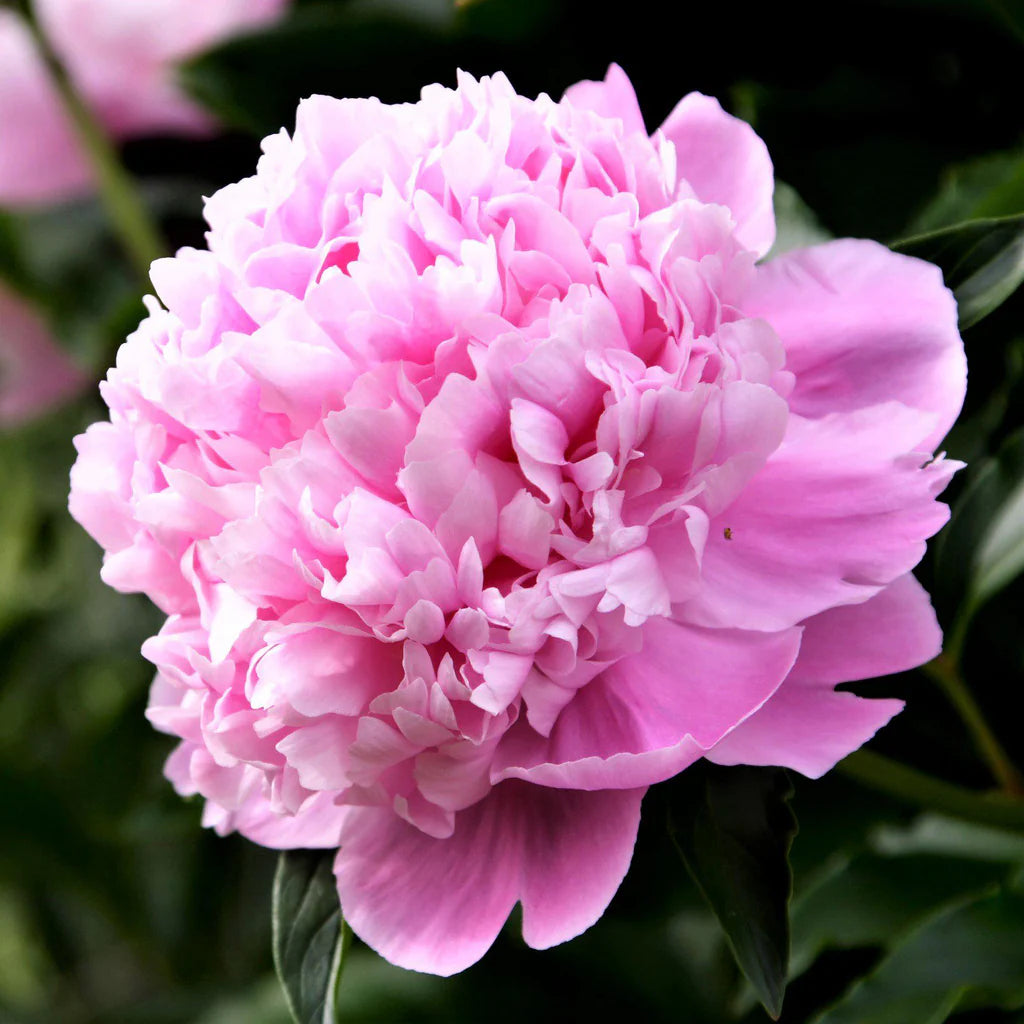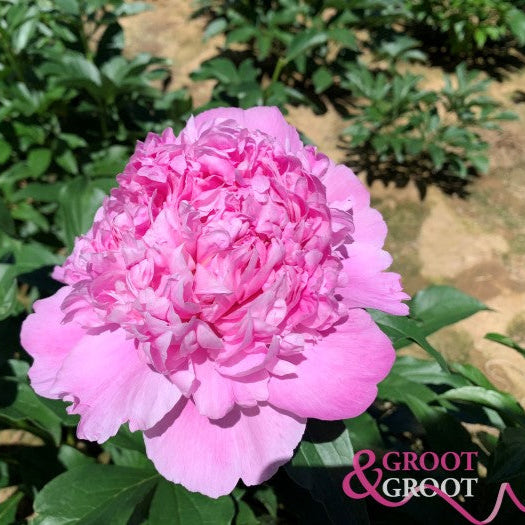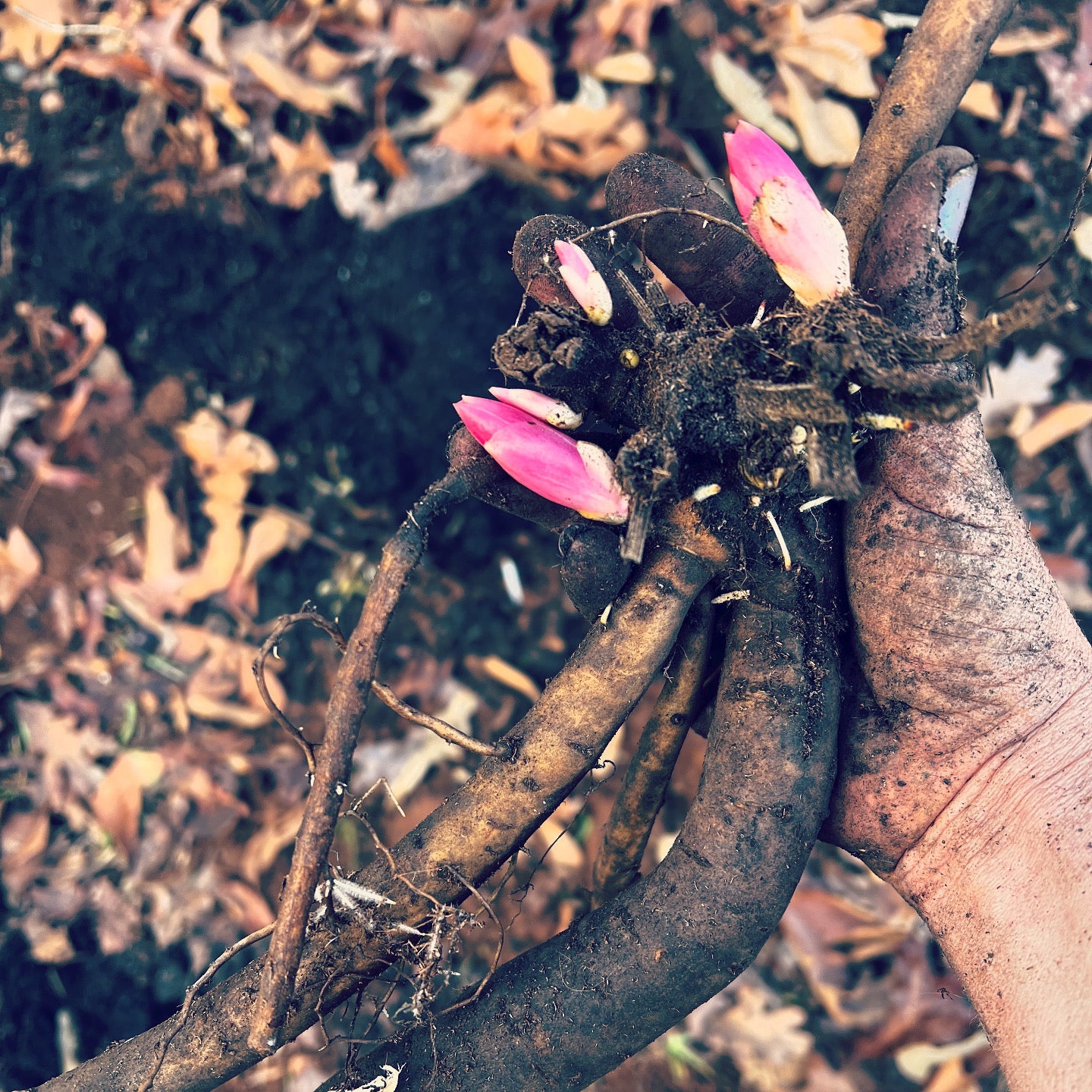Fuirk Home
Monsieur Jules Elie Peony - Lactiflora 3-5 eyes
Monsieur Jules Elie Peony - Lactiflora 3-5 eyes
Couldn't load pickup availability
Monsieur Jules Elie Peony – Big Blooms, Legendary Status
Large roots with 3-5 eyes ship mid November.
Peony ‘Monsieur Jules Elie’ is a true heirloom diva. Introduced in 1888 by Crousse in France, this lactiflora legend flaunts massive, fully double bomb-type flowers in rose-pink with a silvery blush at the center. The blooms are fragrant, ruffled, and absolutely show-stopping, clocking in at a full 8 inches across. You’ll smell them before you see them.
Now, for the reality check: He’s gorgeous, but a little needy. The tall 36" stems are often too delicate to hold up the massive blooms without support. He’s also prone to sooty mold in damp conditions and blooms very early, which can make harvest timing tricky for cut flower growers.
But... that color. That scent. That 19th-century peony drama. For the right grower, this classic still delivers.
Why Grow Monsieur Jules Elie?
-
💖 Heirloom Status: Over 125 years old and still turning heads
-
🌸 Huge Bomb Blooms: Light rose-pink with silver-toned centers, up to 8" wide
-
🌹 Classic Fragrance: Smells like old-fashioned garden roses
-
🌿 Tall and Lush: Reaches 36", great foliage, good in the landscape with support
-
⚠️ High-Maintenance But Worth It: Needs staking, may suffer in overly damp weather—but still loved for a reason
Quick Facts:
-
Botanical Name: Paeonia lactiflora ‘Monsieur Jules Elie’
-
Type: Herbaceous, lactiflora
-
Introduced: 1888 (Crousse, France)
-
Bloom Form: Fully double, bomb-style
-
Color: Light rose-pink with silver-toned inner petals
-
Fragrance: Strong, rose-like
-
Height: ~36 inches
-
Bloom Time: Early
-
Foliage: Light green
-
Ideal For: Heirloom lovers, peony collectors, patient gardeners with good staking habits
🌟 He’s a bit high-maintenance, but he earns his keep. Monsieur Jules Elie is peony drama at its most iconic.
November Shipping
November Shipping
2025 Fall-Shipped Peonies: Orders are shipped in the order received, not by zone. Pre-orders will begin shipping in early-to-mid November 2025. PEONIES ARE COLD-HARDY PERENNIALS, and can be planted anytime the ground is not frozen solid. Remember- soil temperatures are not the same as air temperatures. Peonies need the winter chill. If you are concerned about the ground freezing before your bare root arrives, simply dig your holes and prep the site in advance.
Guarantee
Guarantee
We guarantee our plants are healthy, and true to variety. We are so confident that we offer a conditional warranty for the growing season.Click here to read the complete policy.
Grow & Care
Grow & Care
Peonies are long-lived plants that can thrive for a century or more. The root system of a peony is not only large, it's also quite different from that of most other perennials. Peonies have two types of roots. Fine, fibrous ones that absorb water and nutrients, and tuberous roots that are as thick your finger and very brittle. The thick ones are actually underground stems with “eyes” that sprout new shoots.
Planting:
Since some of a peony’s roots are actually underground stems, it’s important not to plant them too deeply. There should be no more than about an inch of soil covering the upper-most roots. If they are deeper than that, you will get a robust plant, but very few flowers.
During the first growing season, the soil will gradually settle around the newly-planted roots. Sometimes this results in the roots sitting deeper than intended. If this happens, gently lift the roots so they are at the correct level. If you decide to mulch the area, keep the root zone right under the plant bare. Dig hole at least twice the width of your roots to reduce soil compaction.
Care:
Once your peony plants mature, you can cut as many stems as you like. But during the first few years, it’s best to cut just few stems and let the plants retain as much of their foliage as possible. This will give them the maximum amount of energy to bulk up their root system.
When the plants finish blooming, use scissors or sharp pruning shears to cut off the dead blossoms. Try to do this before the seed pods form. Remove the flower as well as about 6” of the stem. This will allow the rest of the foliage to hide the cut stems.






